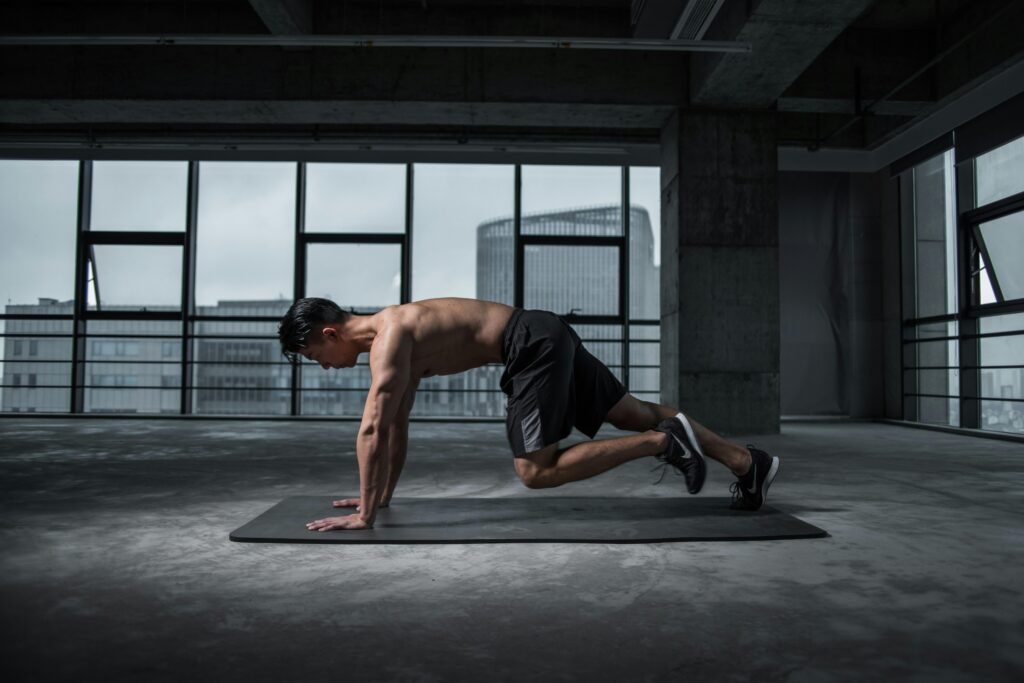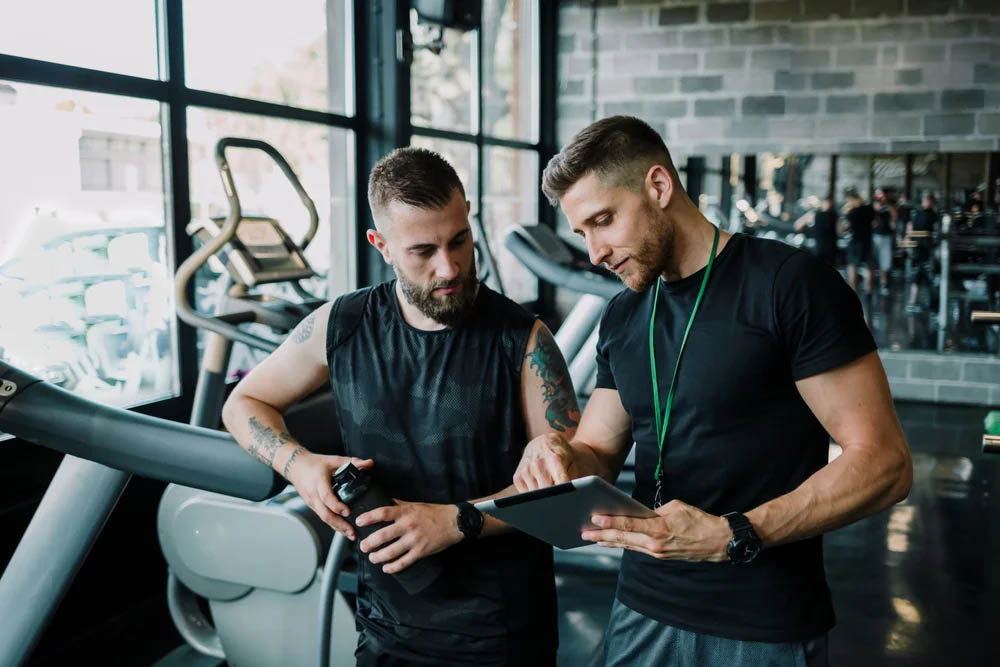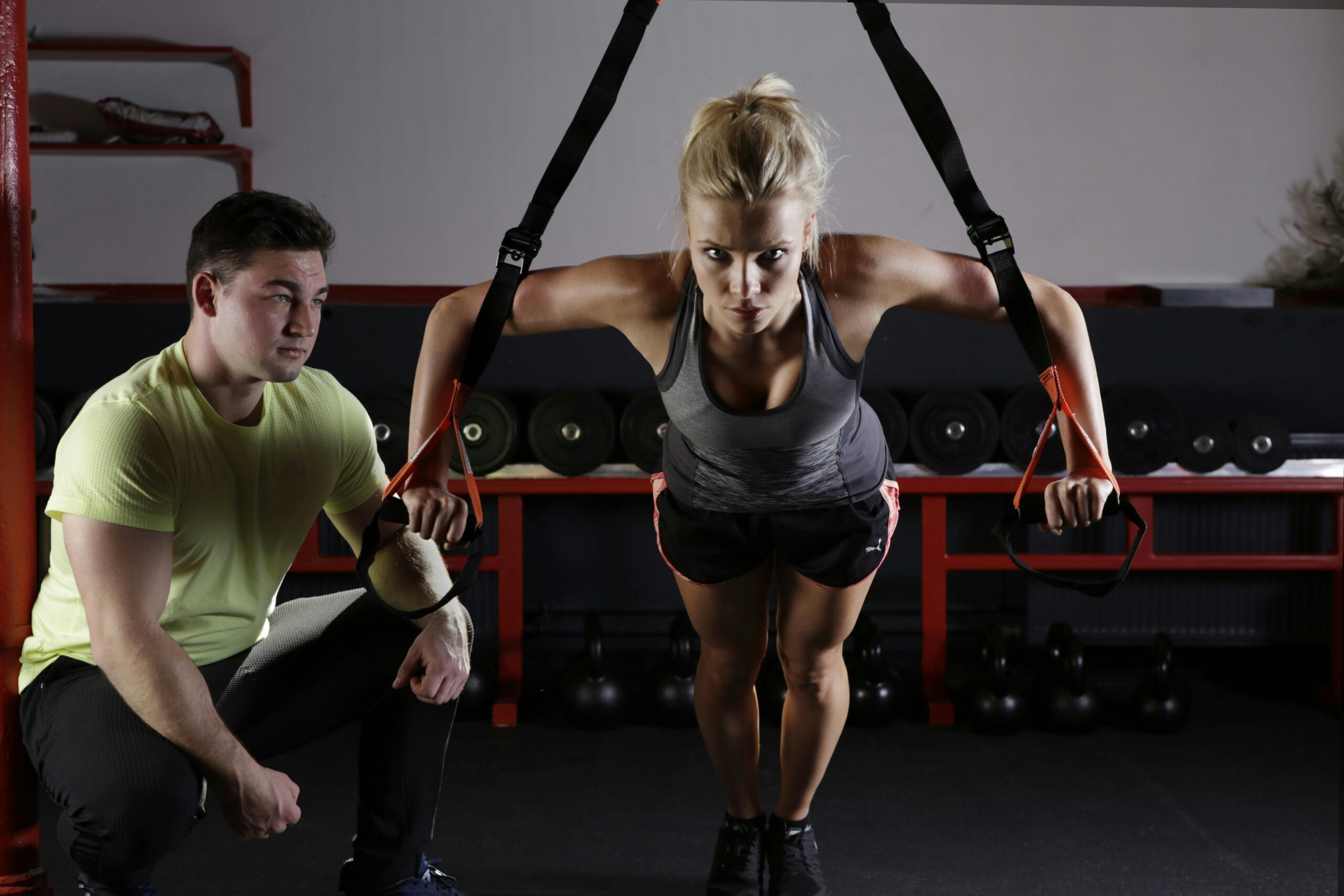You don’t need weights or machines to get strong. Bodyweight strength training uses the resistance of your own body to improve muscle tone, endurance, and mobility. With coaching support, even complete beginners can safely build lean muscle mass and improve health at home, at the park, or anywhere.


Why Bodyweight Strength Training Works
More people are turning to bodyweight strength training because it’s functional, accessible, and easy to scale for any fitness level. Whether your goal is fat loss, increased muscle mass, or simply feeling stronger, these workouts deliver results. Combined with proper form, good nutrition, and guidance from a professional fitness coach, your own body becomes the best tool for transformation.Functional and Accessible Fitness for All Levels
Bodyweight strength training for beginners starts with learning functional movements like squats, lunges, and push-ups against a wall. These low-impact movements protect your joints while still building strength, coordination, and flexibility. You’ll learn how to modify movements like assisted bodyweight squats, supported lunges, and elevated push-ups to match your current ability. Research shows that even basic bodyweight strength training routines, requiring no gym gear and only a small time investment, can significantly boost cardiorespiratory fitness in adults who are generally inactive. These improvements are achievable with consistent low-impact sessions, making bodyweight workouts a practical solution for those looking to improve overall health without barriers to entry.Backed by Science and Trusted by Coaches
Science shows that resistance training using bodyweight can stimulate muscle fibers just as effectively as weights, especially with proper time under tension and progressive overload. Coaches often use these methods to teach form modifications, improve posture, and reduce injury risk. If you’re looking for expert guidance, consider 1 on 1 fitness coaching in Roseburg to start with a personalized plan.No Gym Required, but Results Guaranteed
Bodyweight workouts improve joint health, enhance metabolism, and support muscle growth without equipment. With guidance from a personal fitness coach near you, results come faster especially when paired with habit tracking, dynamic warm-up routines, and Balanced Body Nutrition planning. All you need is a small space, a mirror, and a willingness to move.
The Beginner Advantage
If you’re just starting out, now is the perfect time to learn form, master your body position, and build strength without bad habits. Beginners progress quickly because every movement is new and stimulates change. With the right coach, bodyweight strength training for beginners creates noticeable results in weeks, not months.Start Simple with Scalable Movements
You’ll begin with movements like knee push-ups, bodyweight squats, reverse lunges, and side planks. These build muscular engagement and strengthen your core, glutes, and legs. Use a timer, a tracking sheet, or a start today app to measure reps and stay consistent as you increase your range of motion and improve control.Build Foundational Strength Safely
Because no external weight is involved, these exercises teach balance, breathing, and core control. Movements like knee plank and wall push-up are great for learning correct body position. Your coach will adjust exercise progression based on how your body responds keeping sessions safe, supportive, and effective.Designed for Busy Schedules and Real Life
Short, efficient routines like a 10-minute full-body bodyweight HIIT routine or a 31-day bodyweight strength challenge make it easier to stay on track. Each week, your coach may alternate between training patterns like a circuit routine, interval splits, or progressive reps. With the right Strength Training Program, workouts can fit your life, not the other way around.How Coaching Maximizes Bodyweight Training
While anyone can start bodyweight training, coaching brings it to the next level. A professional fitness coach ensures you’re progressing safely, maintaining proper form, and adjusting exercises for your unique goals. Whether you’re focused on fat loss, mobility, or strength gains, coaching turns workouts into long-term results.Personalized Progressions & Skill Scaling
Coaches use exercise variation and movement analysis to keep training effective and challenging. Can’t do full push-ups? Start with a modified pushup position or push-ups against a wall until your muscle endurance improves. A coach monitors how your body adapts and creates smarter progressions to match your ability.Accountability, Feedback, and Tracking
Using a bodyweight tracking sheet, your coach can monitor performance, recovery, and weekly milestones. Weekly check-ins help identify gaps in consistency or calorie deficit strategy. Whether in person or online, working with a personal fitness coach near you ensures you stay on track even on the busiest days.In-App Support, Messaging, and Results Tracking
Modern coaching includes mobile apps, messaging, and video reviews. You’ll receive updated routines, mobility drills, and nutrition tracking to support muscle repair and recovery. Pairing strength work with proper hydration, carb-rich pre-workout snacks, and post-workout protein supports better energy levels and lean muscle mass.
Sample Beginner Bodyweight Strength Plan
A smart plan starts with 3 days a week of structured movement. This gives your body time to recover while building muscle endurance, mobility, and total-body strength. Each session targets a different muscle group using functional exercise techniques.Weekly Structure (3-Day Split Example)
- Day 1 – Lower Body:
- Bodyweight squat – 3 sets of 10
- Forward lunges – 3 sets of 8 per leg
- Bodyweight good mornings – 3 sets of 12
- Day 2 – Upper Body:
- Wall push-up or elevated push-up – 3 sets of 10
- Knee push-up – 3 sets of 8
- Side plank – 3 sets of 20 seconds each side
- Day 3 – Core & Mobility:
- Mountain climbers in plank position – 3 sets of 30 seconds
- Knee plank hold – 3 sets of 20 seconds
- Stretching and dynamic warm-up – 5 to 7 minutes
Movement Patterns & Progression Options
The goal is to move from basic to intermediate levels using progressive volume and intensity. For example:- Replace assisted bodyweight squats with jump squats over time.
- Extend side planks and plank position holds for longer durations.
- Add pause reps to increase time under tension.


